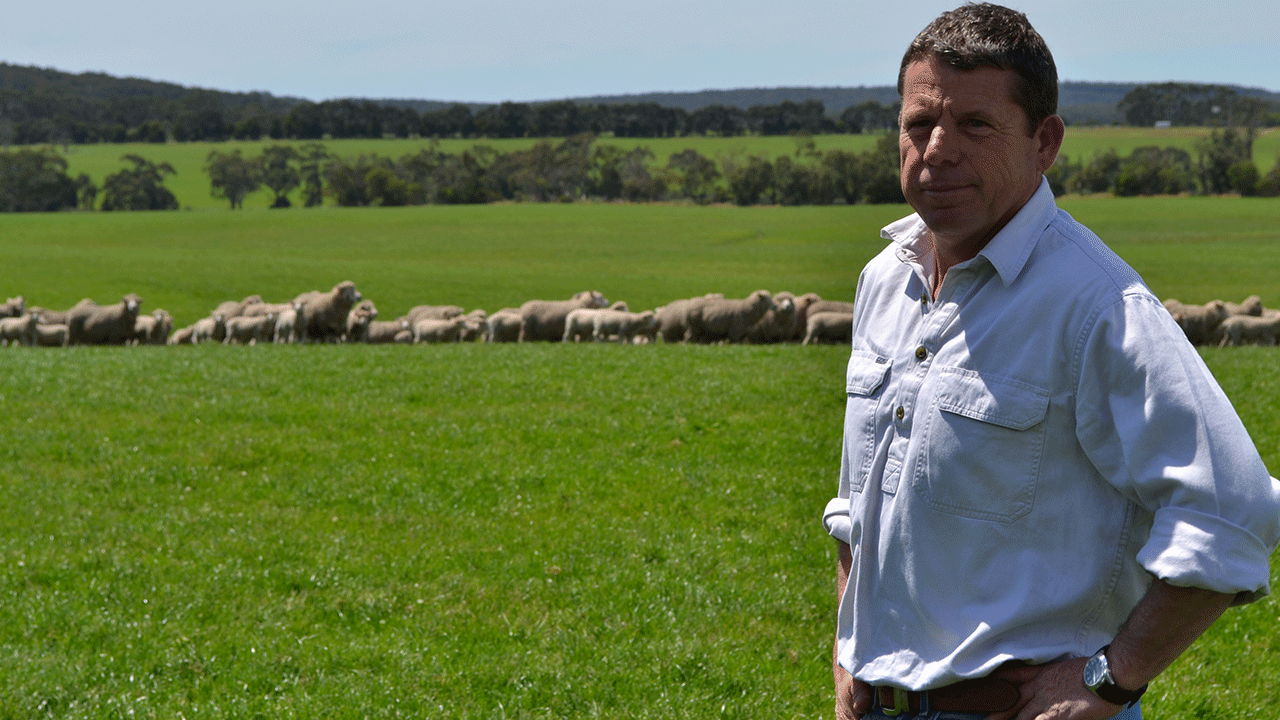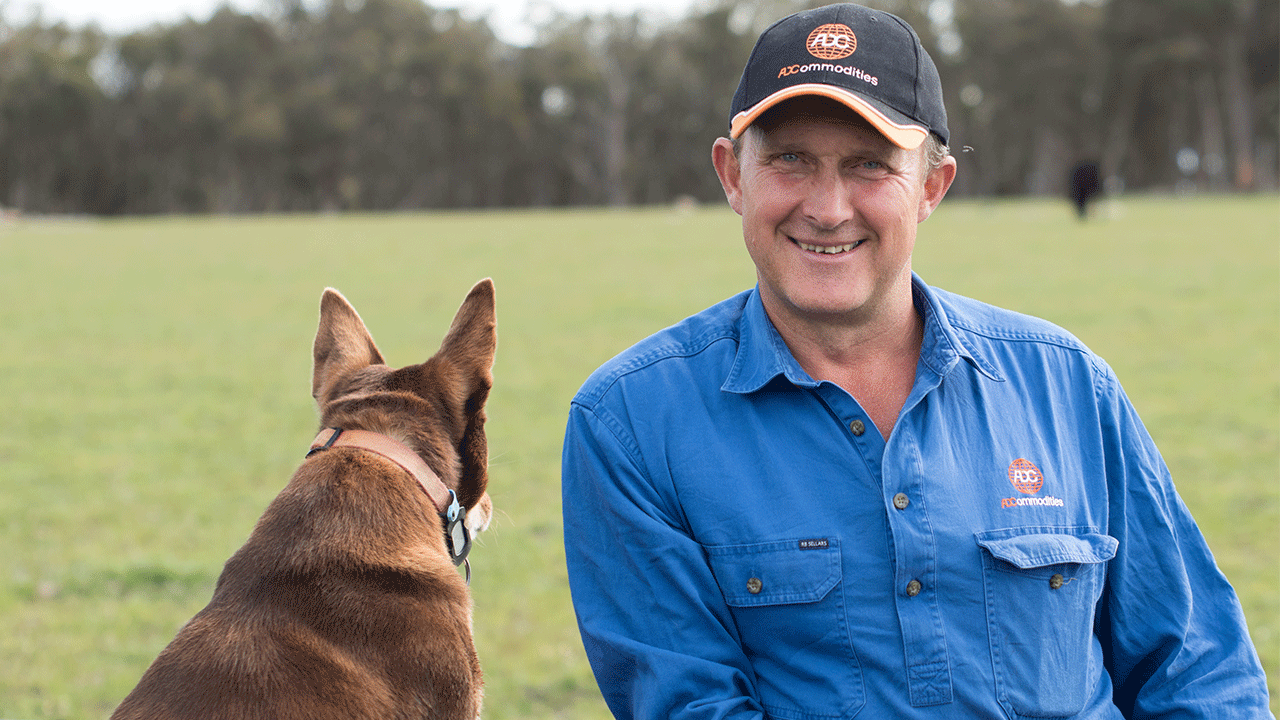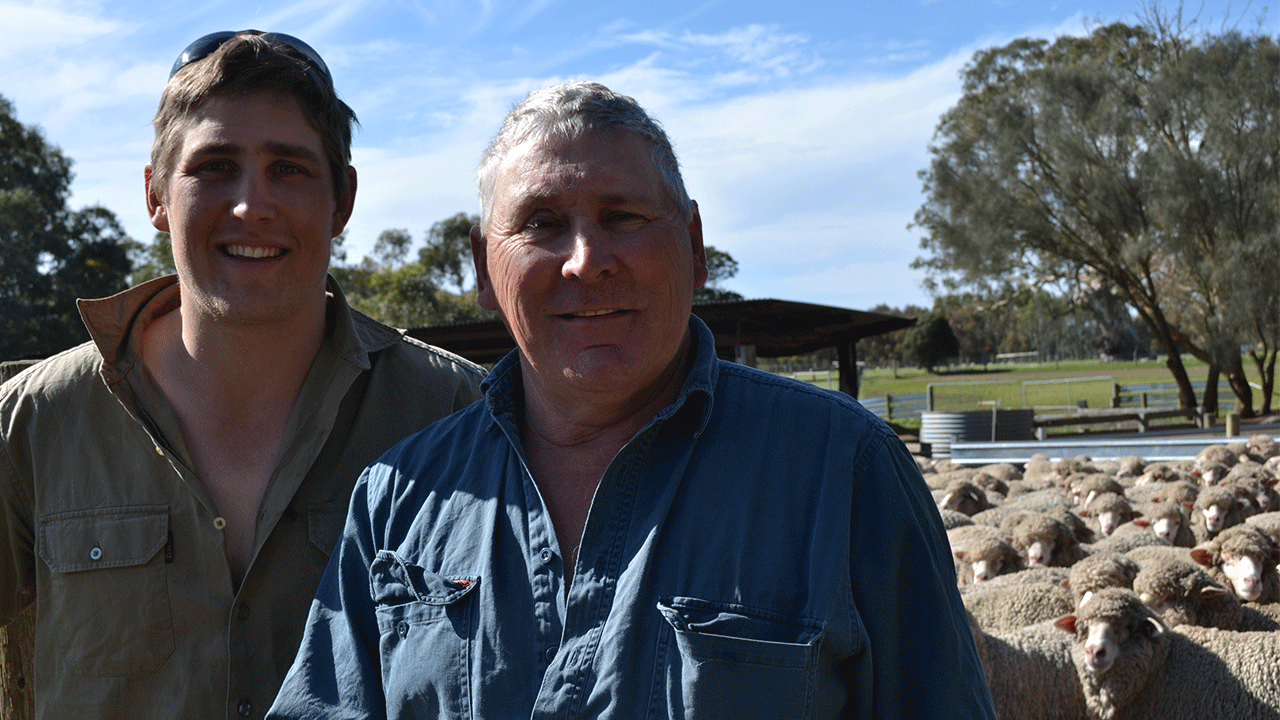EPISODE 1: What are Australian Sheep Breeding Values?
Australian sheep breeding values – or ASBVs – allow you to predict the genetics each animal will pass on to their progeny. This short animation clearly explains the ins and outs of ASBVs.

There’s no doubt. When you’re buying a ram, his physical and structural soundness must be factored in. But what you can’t see is just as important. Using breeding values allows you to see ‘under the hood’ of an animal. You can see his weak points and his strengths to help decide if he’s the right fit for your flock.
Take two rams. Same price. Same weight. Both structurally sound. Which one would you choose? Find out by watching this short video and see what difference genetics can make.
Meet prime lamb producers Philip Gough, Andrew Carruthers, Russell and Ricky Luhrs. They share their journey with breeding values and how they’ve accelerated the performance of their flocks.
Philip runs a commercial prime lamb enterprise in south-western Victoria.
"I get really excited about breaking new records, and there’s only one way that’s going to happen, and that's by selecting superior genetics." Philip Gough

Andrew runs a commercial temperate cattle and prime lamb operation in NSW.
“The performance of our kg/ha has been outstanding. It's a combination of genetics and also understanding our country and the way we manage our livestock." Andrew Carruthers

Russell and Ricky Luhrs run a commercial prime lamb and Merino sheep operation across three properties in western Victoria.
"When Ricky started bringing in new genetics, you could see the results as soon as the new lambs hit the ground. They were bigger and they just grew." Russell Luhrs

Accelerating your flock’s performance with better breeding values starts with setting your breeding objective, understanding estimated breeding values and selection indexes and knowing your way around the Sheep Genetics website.
You can then start to apply your new-found knowledge when you’re ready to shop for your next high performing ram.
Here are some short ‘how-to’ animated videos to help get you started with using breeding values. It’s best to watch them in the order shown. Take your time. Watch and re-watch the videos at your leisure.


Australian sheep breeding values – or ASBVs – allow you to predict the genetics each animal will pass on to their progeny. This short animation clearly explains the ins and outs of ASBVs.
Before you start using breeding values, you need to know what you’re trying to achieve with your flock. Here are some important things to consider when setting your breeding objective.
A sheep index takes a range of important production traits and combines them into one number so you can rank rams, quickly and easily. Find out how they work and the different indexes you can pick and choose from.





Reproduction traits are most important in self-replacing flocks where retaining females for breeding is a focus. These traits will positively influence the reproductive performance of a ram’s daughters. This short video explains the four reproduction traits available.
Weight ASBV traits are used in sheep production systems to either improve growth or control birthweight and mature ewe size. This video explains the six weight traits available.
Carcase and eating quality ASBV traits are important traits in most production systems, especially for producers trading in prime lamb markets. This short video explains the four carcase traits and two eating quality traits available.
Health and welfare traits assist in raising healthy sheep that meet our long-term sustainability needs. This short video explains the seven health and welfare traits available.
Wool ASBV traits are used to describe the quantity and quality of wool producing sheep. The amount of wool cut and the quality of wool are key factors to increase profit. This short video explains the three quantity traits and the 4 quality traits.
There are also visual wool quality traits reported, as some traits that impact wool income can be visually scored. This short video explains the four visual wool quality traits.
This video steps you through how to go about buying a high performing ram, providing tips on what to do before, during and after the sale.